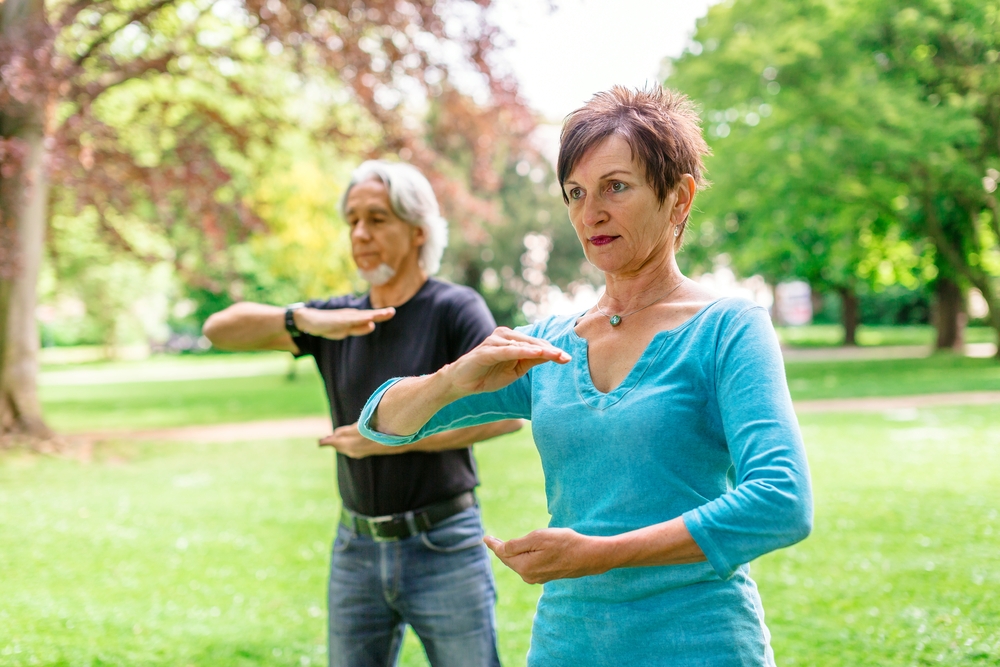Study Finds Tai Chi Improves Motor Function in Parkinson’s Patients

Tai chi improves motor function in people with mild to moderate Parkinson’s disease and may slow down disease progression, a new study has found.
The study, “Tai Chi versus routine exercise in patients with early- or mild-stage Parkinson’s disease: a retrospective cohort analysis,” was published in the Brazilian Journal of Medical and Biological Research.
Tai chi is a Chinese martial art that involves a series of fluid motions, generally accompanied by deep, meditative breathing. The slow-moving and low-impact practice offers some benefits of exercise, particularly in people who may not be able to engage in more intense physical activity.
Tai chi has been recommended as a supportive therapy for people with Parkinson’s disease. However, there hasn’t been much data to support these recommendations.
In the new study, 500 people with mild-to-moderate Parkinson’s were divided into two groups. The tai chi (TC) group received tai chi lessons, 80 minutes per day, three days per week, for two months. The routine exercise (RE) group received classes in routine exercises (including treadmill training, aerobic training, and dance) for 90 minutes per day, three days per week, for two months.
Prior to enrollment in the study, there were no significant differences between the two groups. The study population was predominantly male.
Before and after the training, the participants’ motor function was evaluated through a number of routine measurements, such as recording the time it took to walk 50 feet. Both groups showed improvement over the two months of the intervention, but across measures, improvements were significantly higher in the TC group. For example, after the intervention, the time to walk 50 feet was, on average, 8.37 seconds in the TC group and 9.71 seconds in the RE group.
Participants in the TC group also reported a significantly reduced number of falls (average of 3.45 vs. 7.45 over the past six months), and many of them discontinued or reduced the use of other therapies, such as levodopa.
When hypothesizing about why tai chi produces such positive outcomes in Parkinson’s patients, the researchers believe that it normalizes the levels of neurotransmitters that are present at lower levels in this patient population — such as dopamine and acetylcholine — in various regions of the brain.
“When tai chi is practiced daily, it promotes the development of various de novo neural pathways in a [Parkinson’s] patient that results in fast response to posture challenges,” the researchers said.
Interviews were conducted with participants after the intervention. In general, participants in both groups were positive: “Participants reported that exercises helped them improve their confidence and balance,” the researchers wrote. Notably, a greater proportion of TC participants said their intervention felt safe and helped with balance.
No adverse events were reported in the study.
“Although the study spanned over a short period of time, its results supported tai chi as an effective therapy for [Parkinson’s] patients,” the researchers wrote. They noted that further studies, evaluating such exercises over a longer period of time, will be necessary to fully understand the impact of the practice on patients.






